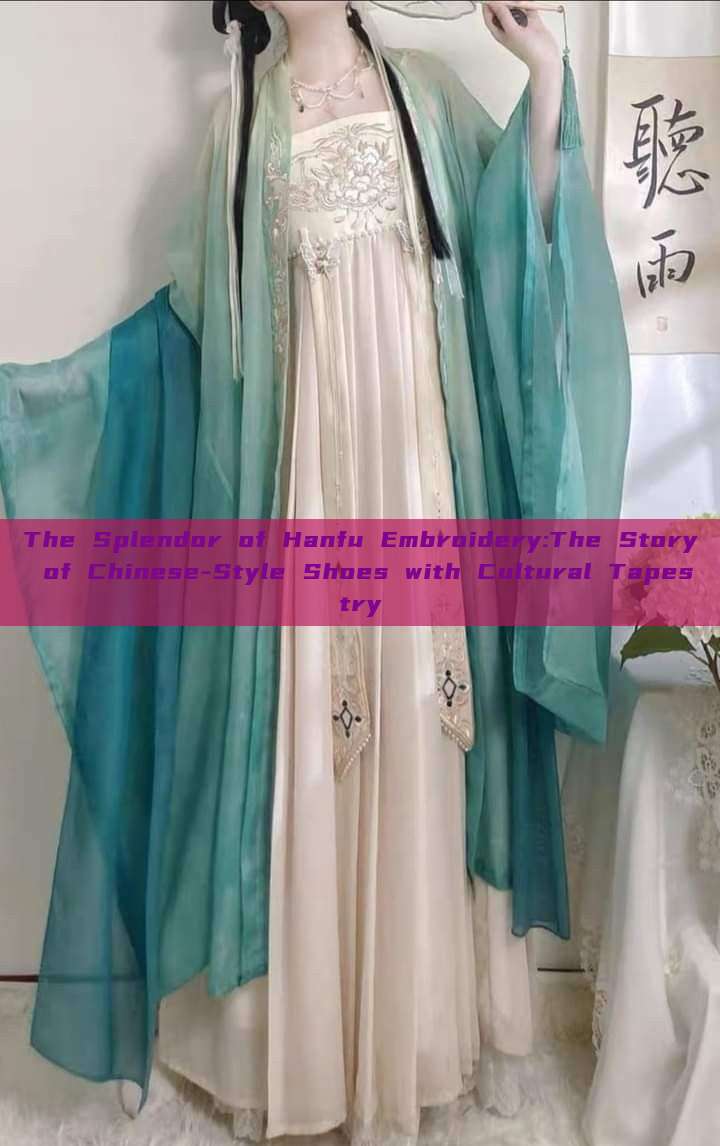In The heart of China, a legacy of exquisite craftsmanship and cultural heritage thrives in the art of Hanfu embroidery. Among the vibrant array of traditional attire, the embroidered shoes of Hanfu, a unique style of Chinese clothing, stand out as a testament to the country’s rich history and craftsmanship.

The history of Hanfu dates back over thousands of years, embodying the essence of ancient Chinese culture. These exquisite costumes are not just clothing; they are a symbol of identity and a medium for expressing cultural values. The embroidered shoes of Hanfu are an integral part of this legacy, reflecting the intricate patterns and vibrant colors that have been passed down through generations.
The design of Hanfu embroidered shoes is a masterpiece of artistry and craftsmanship. The shoes are often made from high-quality silk or other fine materials, which are then adorned with intricate patterns in vibrant hues. The patterns often depict scenes from nature such as flowers, birds, and landscapes, which are meticulously crafted using various embroidery techniques. The use of different threads, needles, and fabrics creates a unique style that is both beautiful and enduring.
The art of embroidery on Hanfu shoes is not just about aesthetics; it is also a reflection of cultural values. In Chinese culture, embroidery has always been associated with femininity, skill, and patience. The intricate patterns and vibrant colors symbolize good luck, prosperity, and harmony. The use of specific symbols and motifs in the embroidery further reinforces these cultural values, making the shoes not just a piece of clothing but a symbol of cultural identity.
The popularity of Hanfu culture has experienced a renaissance in recent years, with more people embracing this ancient style of clothing. As a result, the demand for embroidered shoes has also increased. Many skilled artisans have taken up this craft, passing down the traditional techniques to new generations while incorporating modern designs and techniques. This blend of traditional and modern has resulted in a range of styles that cater to different tastes and preferences.
Today, Hanfu embroidered shoes are not just worn during special occasions or festivals but have become a part of everyday fashion. They are worn to traditional events like weddings or tea ceremonies, as well as to modern events like cultural festivals or fashion shows. These shoes have become a symbol of cultural pride and identity for many Chinese people, reflecting their love for their culture and heritage.
In conclusion, the art of Hanfu embroidery on shoes is a testament to the rich cultural heritage of China. It represents a blend of skilled craftsmanship, intricate designs, vibrant colors, and cultural values. The popularity of these shoes today reflects the love and respect for traditional culture among modern people. As this culture continues to grow and evolve, the art of Hanfu embroidery will continue to thrive, inspiring future generations to embrace their cultural heritage.
Moreover, Hanfu embroidered shoes have also become a bridge between China and the world. As Chinese culture becomes increasingly popular worldwide, these shoes have gained recognition and appreciation from people across the globe. Many international fashion enthusiasts have taken an interest in these traditional yet modern styles, seeing them as a symbol of beauty, craftsmanship, and cultural heritage.
The future of Hanfu embroidered shoes looks promising as more people embrace this traditional style. With the continued support and recognition from both within China and beyond its borders, these shoes will continue to thrive and evolve, incorporating modern designs and techniques while maintaining their traditional values and essence.
In essence, Hanfu embroidered shoes are not just a piece of clothing; they are a symbol of cultural heritage, identity, and pride. They reflect the skilled craftsmanship and intricate designs that have been passed down through generations, embodying the rich cultural values of China. As this legacy continues to grow and evolve, it will inspire future generations to embrace their cultural heritage and pass it down to future generations.








